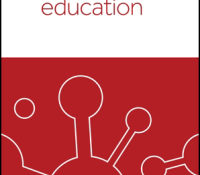tandfonline.com har udgivet en rapport under søgningen “Teacher Education Mathematics”: Abstract Abstract Academic self-efficacy is mostly construed as specific; task-specific, course-specific or domain-specific. Previous research in the Danish university context has shown that the self-efficacy subscale in the Motivated Strategies for Leaning Questionnaire is not a single scale, but consists of two separate course- and activity-specific scales; the Specific Academic Learning Self-Efficacy Scale (SAL-SE) and the Specific Academic Exam Self-efficacy scale (SAE-SE). The SAL-SE and the SAE-SE subscales have previously been found to fit the Rasch model, have excellent reliability, and initial evidence of criterion validity has been established. The aim of this study was to conduct a new validity study of the SAL-SE and SAE-SE scales in the Danish university context. Specifically, whether the original findings of fit to… Continue Reading →
Like this:
Like Loading...
eric.ed.gov har udgivet: Computational thinking is a way of thinking that covers 21st century skills and includes new generation concepts such as robotics, coding, informatics and information construction. Computational thinking has reached an important point especially in the field of science in line with the rapid developments in technology. Robotics applications, software-based activities, STEM (Science, Technology, Engineering, Math) education and problem-based studies are some of the areas where this thinking is used. In this study, which is based on this point, it is aimed to develop a scale for computational thinking. Exploratory sequential design, one of the mixed research methods, was used in the study. First of all, a detailed literature review was conducted and needs analysis was carried out. This study consists of two stages. In the first stage,… Continue Reading →
Like this:
Like Loading...
eric.ed.gov har udgivet: The current study aims to perform the adaptation of the Encouragement of Academic Skills of Young Children (EASYC) Scale into Turkish. The study group was determined by means of the convenience sampling technique. A total of 124 students aged at 48-84 months were included in the sampling of the study. The data collection tools of the study are the Turkish Version of Encouragement of Academic Skills of Young Children Scale (ÇEABD) and the Home Literacy Activities Questionnaire used for criterion validity. In the analysis of the data, explanatory and confirmatory factor analyses, Pearson correlation analysis, descriptive analysis, item total correlation, and internal consistency coefficient calculation were used. As a result of the study, the ÇEABD was proved to be valid and reliable scale in the Turkish sampling.… Continue Reading →
Like this:
Like Loading...
tandfonline.com har udgivet en rapport under søgningen “Teacher Education Mathematics”: ABSTRACT Formulae display:?Mathematical formulae have been encoded as MathML and are displayed in this HTML version using MathJax in order to improve their display. Uncheck the box to turn MathJax off. This feature requires Javascript. Click on a formula to zoom. ABSTRACT A Bayesian IRT-model approach was used to investigate the validity and reliability of student perceptions of teaching quality. Furthermore, the student perceptions were compared with ratings of teaching quality by external observers. Grade 4 students (n = 675) filled out a questionnaire that was used to measure their opinions about the lessons of their teachers. Three lessons of 39 teachers were recorded and rated by 4 raters. The analyses showed that student perception and lesson observation scales fit best in… Continue Reading →
Like this:
Like Loading...
eric.ed.gov har udgivet: The purpose of the research is to develop a valid and reliable attitude scale that can measure the attitudes of math and science teachers (315) and teacher candidates (105) towards mistakes and instant feedback. In the validity studies, the exploratory factor analysis was made with the SPS1S 8.0 package program after that the confirmatory factor analysis was made with Lisrel 8.8 software. To develop the scale; 1. Creation of Item Pool, 2. Obtaining Expert Opinion, 3. Creation of Pre-Trial Form, 4. Factor Analysis is made. According to factor analysis; Kaiser Meyer Olkin (KMO) rate; 0.808; Bartlett test result: 2148,354; Cronbach alpha reliability coefficient for the whole scale: 0.829. According to confirmatory factor analysis: Root Mean Square Error of Approximation (RMSEA) 0.022 (<0.05); p-Value for Test of Close… Continue Reading →
Like this:
Like Loading...
eric.ed.gov har udgivet: In this technical report, we describe the results of a study of mathematics items written to align with the Common Core State Standards (CCSS) in grades 6-8. In each grade, CCSS items were organized into forms, and the reliability of these forms was evaluated along with an experimental form including items aligned with the National Council of Teachers of Mathematics (NCTM) Focal Point Standards. The purpose of the experimental measure was to evaluate how previously existing math items functioned empirically relative to the CCSS items. All included NCTM items were previously rated as linked with the CCSS. Analyses included Rasch modeling to explore the difficulty and functioning of both sets of items, classical reliability statistics (Cronbach’s alpha, testretest, and alternate form reliability) and two sets of Generalizability… Continue Reading →
Like this:
Like Loading...

